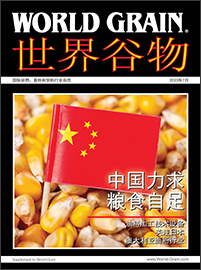WASHINGTON, DC, US — New market access and development was found to play an important role for the profitability in a recent study commissioned by the US Grains Council (USGC) and the National Corn Growers Association (NCGA).
The study — the fourth in a series conducted by Informa Economics/IHS Markit — pegged the direct value of US corn, sorghum, barley and the grain components of ethanol, distiller’s dried grains with solubles (DDGS) and certain meat products at $22.7 billion, for a total economic output of $64.5 billion in 2018.
“Exports are a driver for our economy in general, but nowhere is that more important than in agriculture,” said Ryan LeGrand, president and chief executive officer of the USGC. “We know that demand today from our overseas customers helps support price and basis for farmers throughout the United States. Demand tomorrow will come from the growing populations in Asia, Africa and Latin America. Putting a dollar figure to the impact that demand has here at home just highlights how important it is to keep working with our customers around the world.”
The study also showed the impact grain exports had on the US economy. It determined the export of grain products supported US gross domestic product (GDP) by $27 billion over what would have occurred without such exports, with roughly 295,000 jobs linked directly or indirectly to grain exports.
“This look at the economic contributions provided by each US state and 52 congressional districts will allow NCGA and our corn grower members to effectively demonstrate to lawmakers the need for policies that support US agriculture’s competitiveness around the world,” said Jon Doggett, CEO of the NCGA.
The USGC and the NCGA are utilizing the study results to urge for more support trade policy enforcement and development as grain exports benefit more than just farmers.
According to the data, grain exports positive impact reaches past the farm gate into wholesale trade, real estate, oil and natural gas extraction, and pesticide and chemical manufacturing.
“Grains exports are a way to bring the wealth of the world home to US farmers' local communities,” LeGrand said. “We often tell our farmer members that the world is their market, and this study goes a long way to proving that.”





